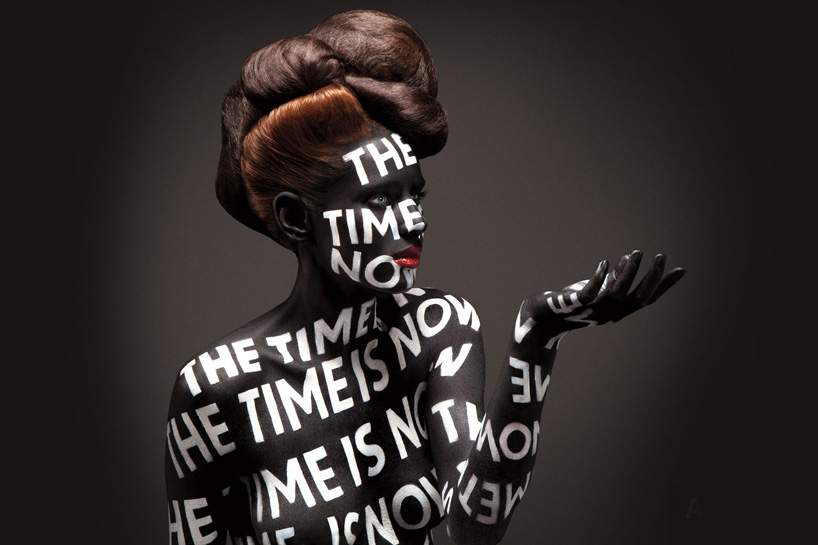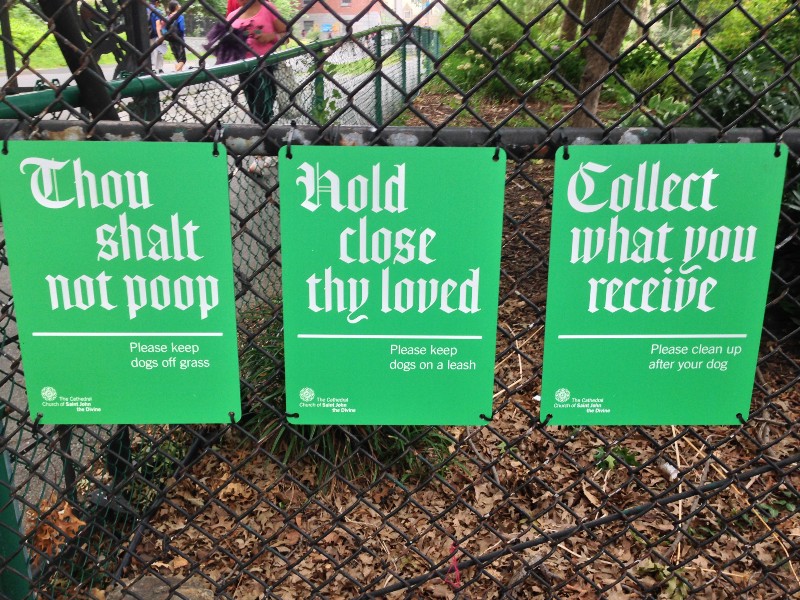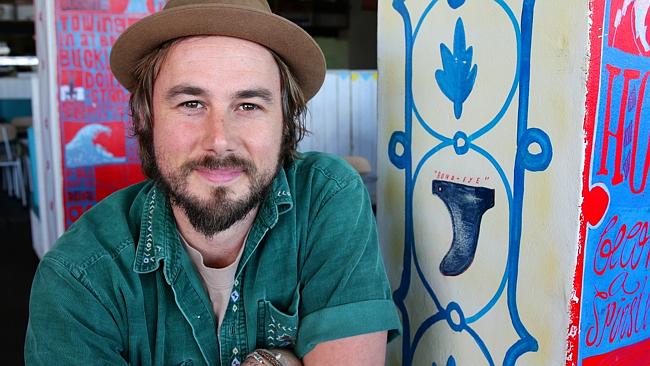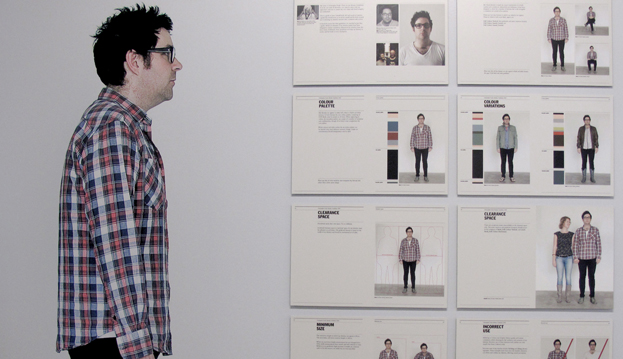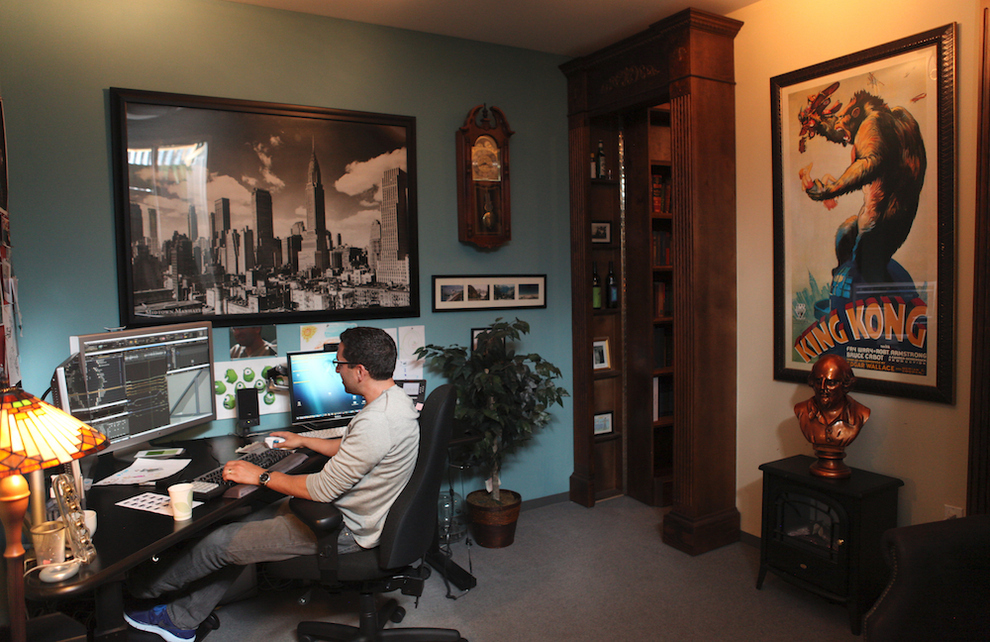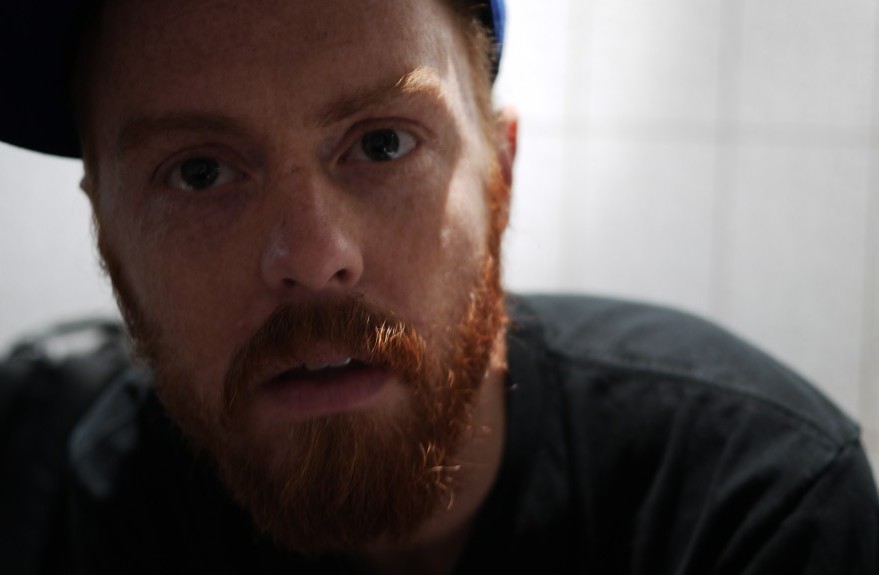The Best Advice and Observations to Come Out of Semi-Permanent 2015
"Nothing I know belongs to me, I'm really just a product of all the people I've met and been exposed to."
If the Semi-Permanent 2015 design conference is anything to go by, designers are currently having their cake and eating it too. The world of art and design has flailed itself straight bang into metamodern territory. This is the movement, people. Sit up and pay attention.
James Brown’s advice for getting jobs is to avoid work as much as possible, Sennep’s carefully crafted Powerpoints told us how to be authentic, ad man Gavin Becker wants big companies to act like start-ups, Pentagram graphic design king Michael Beirut struggles with the question of how to be fashionably timeless. Georgianna Stout thinks a good design be able to grab and engage with you in two totally separate ways depending on how close you get to it. With the help of some ink, Evan Roth has turned Angry Birds – the world’s most jovial but also addictive game – into a deep, contemplative and quite sad gallery piece. And meanwhile in between jolly Irish jigs, host Te Radar took jabs left right and centre, and also taking a massive swing at the entire advertising industry (i.e. 90% of the audience) – “some of the greatest minds I know are out there are wasted on figuring out how to sell fizzy drinks to people” – just before introducing genius Jessica Walsh who opens her talk with a case study of how her company made an ad for a soft drink in India.
It’s confusing, it's conflicting, it’s beautiful, it’s design. Here are some of our favourite observations and pieces of advice from the very glorious two-day design conference called Semi-Permanent.

Graphic Design Can Destroy the World
Michael Beirut, a partner at New York City's Pentagram, is a man who knows how to get things done and done well. One of his many accolades includes having his sign designs for the Cathedral of Saint John the Divine (pictured above) become the most stolen signage in New York City. The biggest take-home message from his talk was the idea that as designers and creatives of all fields we should be meticulous in everything we do because we just never know when what we do could unintentionally have a big effect - negative or positive - on others.
Take the case of Theresa LePore, for example. LePore was a government employee working in Florida about 15 years ago during the Bush vs Gore American election. She had one job, to make a ballot. What she ended up doing was making quite a nice looking two-page hole punch system with party names on the front and back which became known as the prettily named "butterfly ballot". However, because of the way she laid out the choices on both the back and front a lot of people, about 1000 or so, admitted that they voted for a random smaller party instead of Gore (because Gore's name, which was ranked second down on the front page was actually the third hole). That year the election whittled down to very, very minor loss of Gore to Bush by 800 or so voters. "Even a crummy, little job can have a real effect." Beirut observed.
Laetitia Laubscher

Don't Stay in School and Do Drugs, Kids
James Brown was the undeniable rockstar of Semi Permanent. He kicked off the event in full steam with tales of wacky family members, a “sorbet of shit work,” and an endless stream of motivation antidotes.
After growing out of his stage of motion blurs and syringes on t-shirts phase, and also dropping out of art school, Brown came around to the idea that work should contain some kind of disruption and not conform to the system. The first example of that rebellion can be found in the erotic “anti-branding” for hair product EVO, which resulted in a series of commercials banned through the US. He also suggests that one should find serendipity in looseness with work and embrace all mistakes, something he experienced after dipping his fingers in the world of architecture and restaurants.
He cited that taking time off produces good work and that meditation should be used to clear the mind. Further cementing his rockstar status, he ended with the recommendation of travelling to the Mexican desert to indulge in the hallucinogenic cactus, peyote, something he said “turned the whole world into a Salvidor Dali painting.”
Stephen Heard

Nothing I Know Belongs to Me
Starting out his talk with the the line "I'm unqualified, I don't have a lot of work to show and I'm rarely happy, so buckle up," Aussie designer Christopher Doyle made a sea of LED lit faces abruptly tilt up with his brazenly candid talk which included some pretty hilarious we've-all-been-there ventures of trying to make a shoot or campaign work - including doing a mid-winter album cover photo shoot for The Jezebels waist-deep in the ocean tossing SD cards at his assistant.
Generous in his honesty and in giving credit, Doyle made a poignant call, stating that "nothing I know belongs to me, I'm really just a product of all the people I've met and been exposed to." Which lead to a further logical conclusion that perhaps the best way to be creative is to, "give all your work away", adding that in doing so, "it makes you come up with new ideas."
Laetitia Laubscher

If You Have a Message You Want to Get Out Fast, Just Get Naked
Which is exactly what Jessica Walsh and ad agency partner Stefan Sagmeister did when they announced their partnership a few years back. Within hours hundreds of blogs across the www were talking about them. And ever since, the small creative agency based in New York has had a knack for producing work that engages millions.
And although nudity was strongly advised, Walsh also noted that as an agency they had a certain checklist they went through before picking up a new project: "Can we give it our heart? Do we believe in the client's product or message? Do we have enough time?", they ask themselves before deciding to collaborate with a brand. Another one of her main mottos in life is "make less pretty crap and more heartfelt substance", which translates to creating things that "feeds your soul, not your ego". She found that having an intrinsic motivation, instead of just being motivated by outside influences keeps her being creative and not burn out as well.
Laetitia Laubscher

Story is King
Andrew Gordon had quite a rough start getting into the animation world. A computer kid from a young age, the wunderkind got into Pratt Institute, but his parents couldn't afford sending him there so instead he took up menial work at various offices which had some pretty tentative connections to the computer world. After a while he finally saved up enough money to go do a one-year animation course in a relatively unknown Canadian school which later shut down. At some point during this course a recruiter from Warner Brothers took a turn past the school and discovered Gordon after he showed him an intricate animation about the adventures of a flour sack. When his professor found out Gordon had been recruited, he remarked "I don't get it, it's just a damn flour sack", but the Warner Bros recruiter told Gordon "we'll teach you how to animate, we just wanted to know if you could tell a story."
Later he clawed his way into the Pixar kingdom where he observes that even there "everything at Pixar is centred around story", warning that "when you don't have that you have those blockbuster films that are very effects heavy... if you don't have a strong armature usually something will go wrong."
Laetitia Laubscher

Ghost Hunting Equipment Can Be Quite Useful in Hunting for the Internet
There’s a reason Evan Roth boasts the title ‘bad ass mother fucker’. His work, noted as radical entertainment, has seen him recklessly drive around in a fake Google car, collaborate with Jay-Z on an open source music video, and create a freedom of expression van which prompts the community to call a hotline and have their voice boom out of a megaphone attached to the roof.
In line with his title and being one of the more left-of-field speakers of the weekend, Roth’s talk centred around his rebellious mantra of ‘misuse and empowerment’, and what happens when you combine the two: think duct taping knives to a robot vacuum cleaner.
Also, largely focussed on technology and the way we consume media, one of his latest projects is made up of 300 paintings of every finger swipe he needed to complete the mobile game Angry Birds. His most current project Voices Over the Horizon is an attempt to not only discover how the internet works, but to find out what the actual thing looks like. Perplexed by the unvaried appearance of electric blue clip art and browser icons when bringing up an image search of ‘internet’, Roth has travelled to various corners of the world to seek out the actual source, aided by ghost hunting equipment of course.
Despite the extreme nature of the art and the ‘empowerment' he felt standing on a beach with the internet cables underfoot, Roth brought it back to the hard hitting point that sometimes you just want to play in the waves. He also revealed future ambitions of casting magic spells on the servers at Google.
Stephen Heard

Tell a Story in a Simple, Usual Way but then Have Content for People Who Want to Dig Deeper
2 x 4's Georgianna Stout is the queen of spatial design. She's worked with the giants of the industry - brands such as Nike, Tiffany and Co, Prada and Target and sees her company (which she co-founded with two friends from Rhode Island School of Design) as supermarket designers - catering to the high and low ends of the market.
2 x 4's creative strategy is to "[break] down content in a way people can understand, and in a way which shows the essence of the brand". For most of her projects she incorporates some amazing visual double entendres - like at the IIT McCormick Tribune Campus Centre where giant prints of faces turn into little figurines of students upon closer inspection. She builds her work on the rationale of "[telling] a story in a simple, usual way but then have content for people who want to dig deeper."
Laetitia Laubscher

Find a Balance Between Silence and Sound in Your Life
After abandoning his career as a hard techno DJ, Yuri Suzuki sought out to find the value of sound and noise, whether it be from a kettle or a road. His enviable list of projects have included music notation for the dyslexic - something he suffers from himself - a white noise trumpet to calm crying babies, and using a 1970s inkjet printer as an instrument.
It took 28 hours for Suzuki to get to Semi Permanent. Battling what he called “massive jet lag”, he went on to outline his complicated practise in an applause-heavy presentation, pointing out that everyone should try to “find a balance between silence and sound in life.”
Exploring analog qualities in the digital space, he has turned CDs into vinyl, created a robot that translates coloured lines into sound, a musical invention kit allowing the user to make music from everyday objects. He also spent five years creating a spherical record player to create an aural journey around the world in 30 minutes.
Stephen Heard

